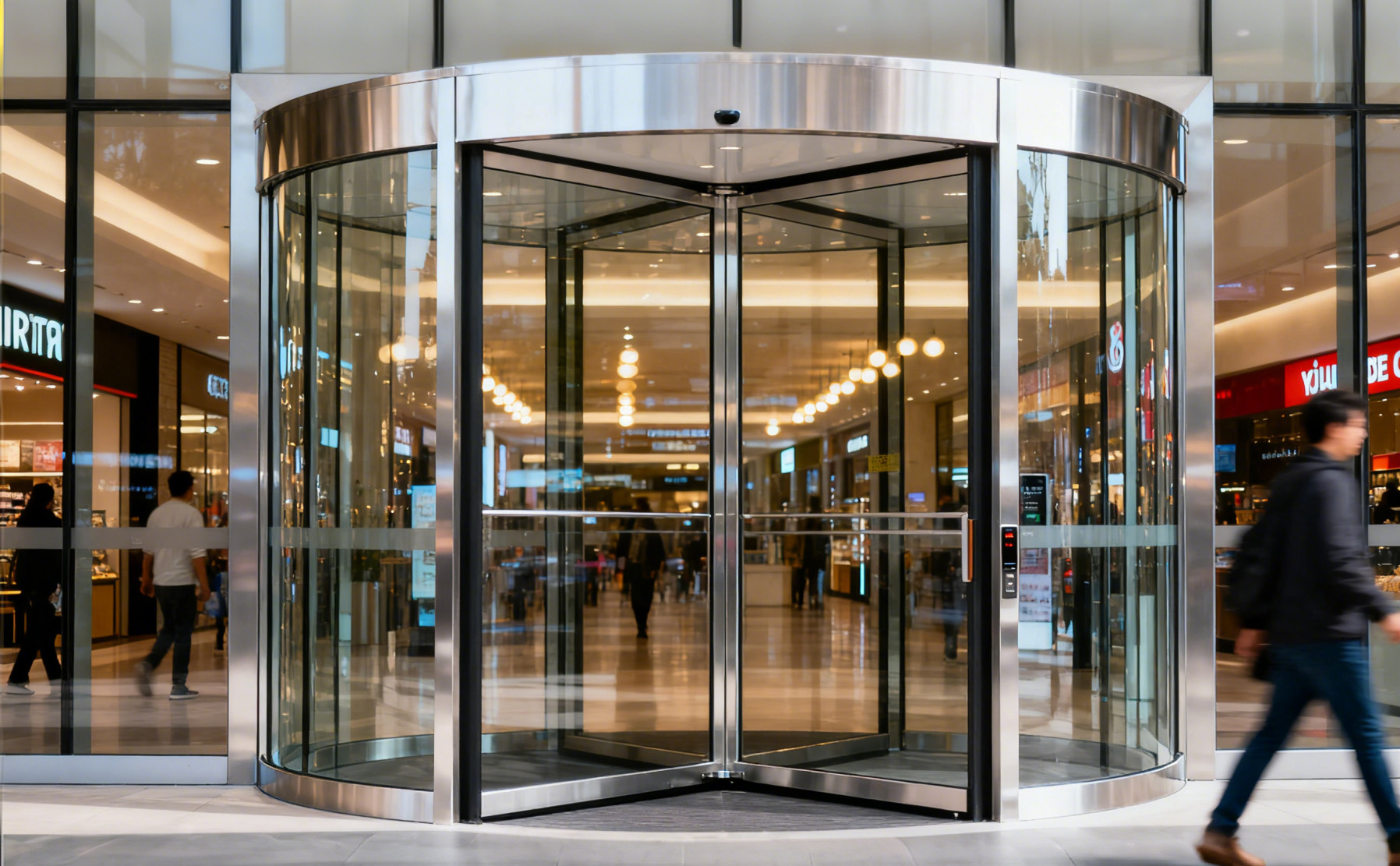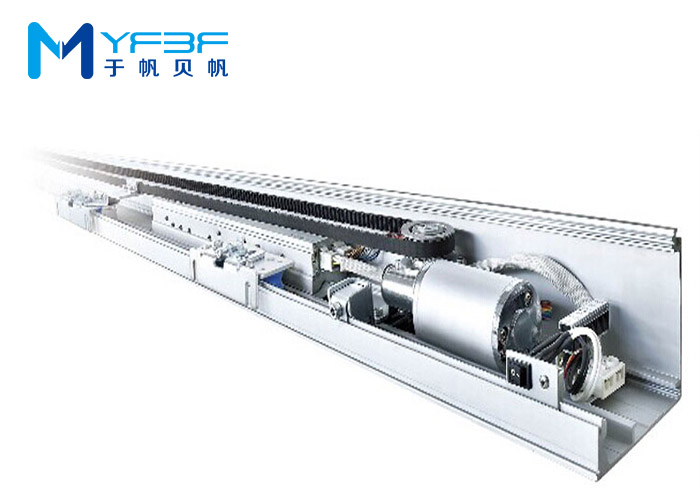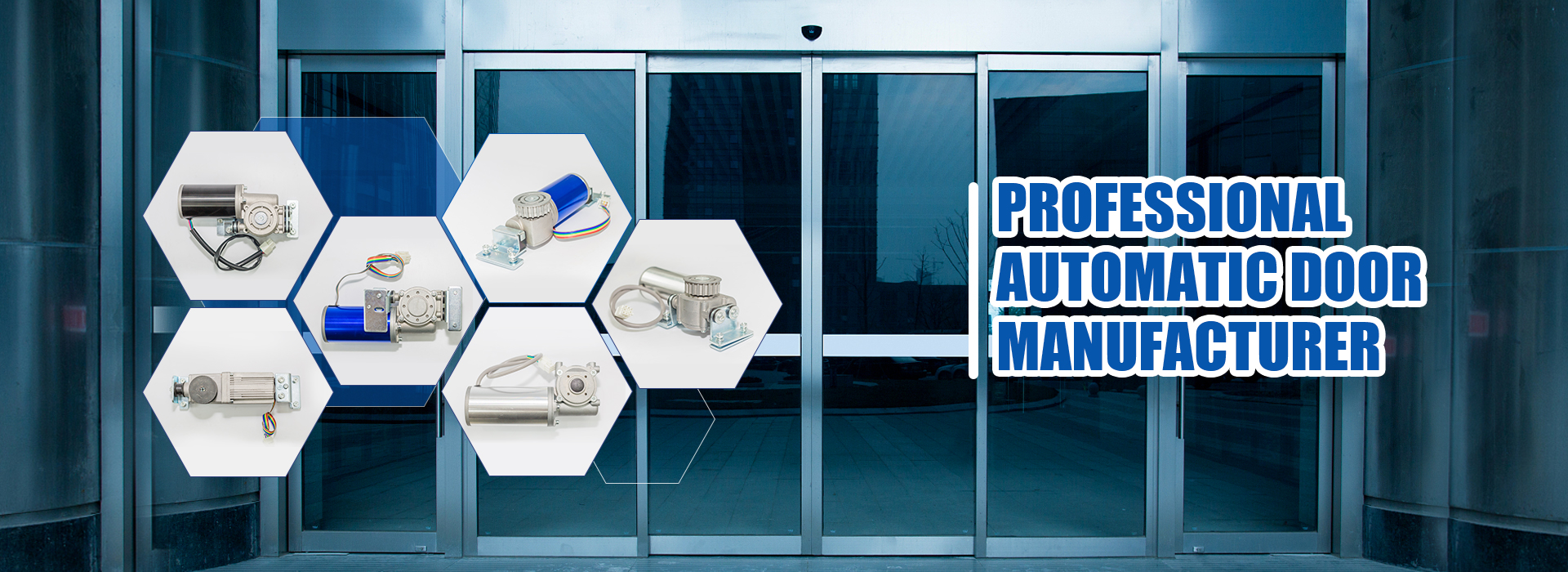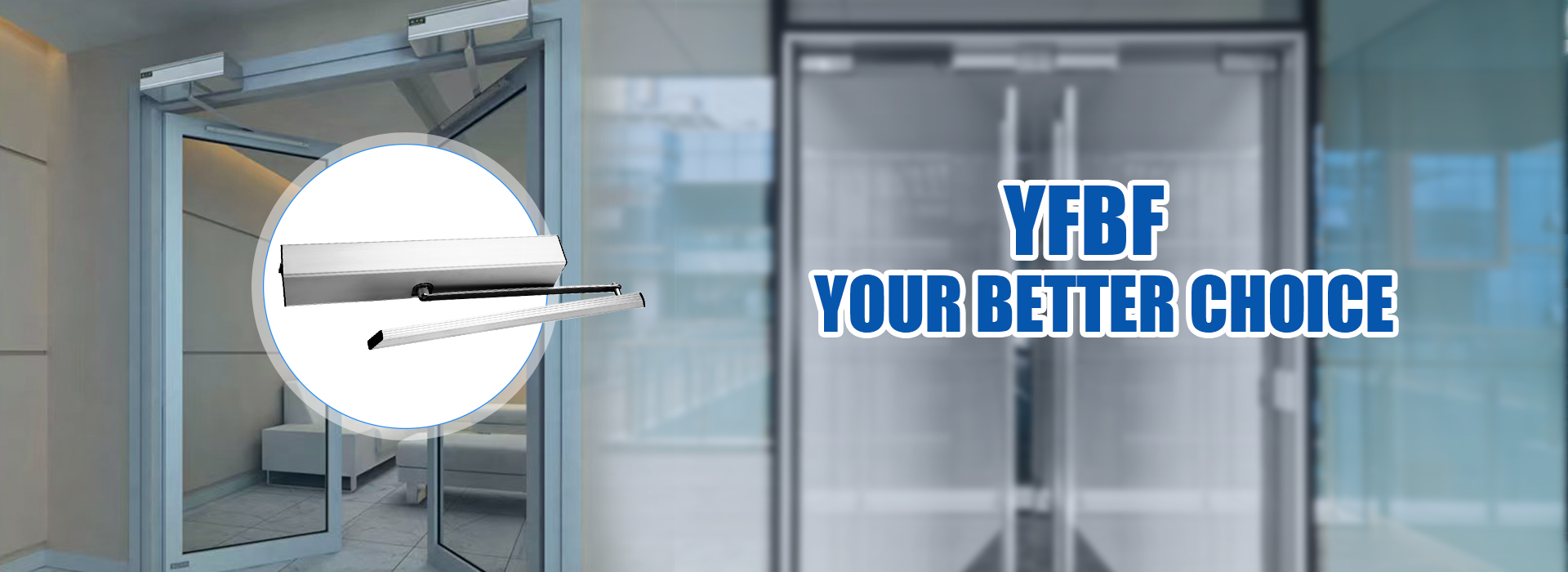
Automatic sliding door operators enhance access for everyone. They offer smooth entry for individuals with disabilities, the elderly, and those carrying items. These operators promote independence and convenience, making daily tasks easier for all users. By eliminating physical barriers, they create a welcoming environment.
Key Takeaways
- Automatic sliding door operators enhance accessibility for individuals with disabilities, the elderly, and parents with strollers, promoting independence and convenience.
- These systems comply with the Americans with Disabilities Act (ADA), ensuring safe and easy entry for everyone, reducing physical strain and the risk of accidents.
- Automatic doors create a welcoming environment in public spaces, improving customer flow and satisfaction while supporting hygiene and safety.
Benefits for Individuals with Disabilities
Enhanced Mobility
Automatic sliding door operators significantly improve mobility for individuals with disabilities. These systems allow for effortless entry and exit, eliminating the need for physical exertion. Research indicates that automatic doors enhance accessibility features, which can greatly benefit individuals with functional limitations.
- Automatic doors enable quicker entry compared to manual doors, especially for those with mobility impairments.
- They comply with the Americans with Disabilities Act (ADA), ensuring that entrances remain accessible without requiring additional effort.
The convenience of automatic sliding doors allows individuals using wheelchairs or other mobility aids to navigate spaces with ease. This seamless access fosters a more inclusive environment, allowing everyone to participate fully in daily activities.
Independence and Dignity
The presence of automatic sliding door operators contributes to a sense of independence for individuals with disabilities. Studies show that home automation, including the use of automatic doors, leads to increased autonomy and improved mental health outcomes.
| Study | Findings |
|---|---|
| Cleland et al., 2023a | Identified increased independence, improved mental health, and reduced reliance on caregivers as outcomes of home automation for individuals with disabilities. |
| WHO Report | States that home automation enables increased independence and improved well-being for people with disabilities. |
By allowing individuals to enter and exit buildings unassisted, these operators enhance their dignity. They no longer need to rely on others for assistance, which can be empowering. This independence not only improves their quality of life but also positively impacts the broader community by reducing the demand for caregiver support.
Advantages for the Elderly

Safety and Convenience
Automatic sliding door operators significantly enhance safety and convenience for elderly individuals. These systems allow for hands-free operation, which is particularly beneficial in both residential and public settings. The convenience of automatic doors reduces the risk of accidents, as they eliminate the need for physical contact with potentially heavy or cumbersome doors.
Key Benefits of Automatic Sliding Doors for the Elderly:
- Improved Accessibility: Facilitates easier entry and exit for individuals with mobility challenges.
- Hands-Free Operation: Enhances convenience and hygiene, especially in public places.
- Safety and Security: Built-in sensors prevent accidents by ensuring doors do not close on individuals.
A recent study highlights that elderly individuals often experience anxiety when using manual doors, which can lead to falls. Observations indicate that some users may improperly activate door switches or pull doors in the wrong direction, resulting in injuries attributed to user error rather than equipment failure. Automatic sliding door operators mitigate these risks by providing a safer alternative.
| Feature | Description |
|---|---|
| Hands-Free Operation | Allows users to enter or exit without physical contact, enhancing convenience and hygiene. |
| Customizable Settings | Adjusts door opening speed and duration to accommodate varying mobility levels. |
| Safety Features | Prevents doors from closing too quickly or with excessive force, reducing injury risk. |
Reducing Physical Strain
Automatic sliding door operators are designed to eliminate physical barriers, which is particularly advantageous for elderly individuals. By removing the need to exert force to open heavy doors, these operators significantly reduce physical strain. They allow for smoother transitions, promoting greater independence for users.
Research indicates that automated doors allow for hands-free operation, which is especially beneficial for elderly users. These doors can remain open longer, ensuring safer passage and reducing the risk of accidents. The convenience of automatic doors means that seniors can navigate their environments with ease, enhancing their overall quality of life.
Benefits of Automatic Sliding Doors:
- They eliminate the need to push or pull heavy doors, thereby reducing physical strain.
- They facilitate effortless movement, making it easier for seniors to carry items or use mobility aids.
Healthcare professionals recognize the importance of automatic sliding doors in enhancing mobility and safety for the elderly. These doors ensure compliance with ADA standards, making facilities accessible to all. They provide individuals with mobility challenges greater control and freedom when entering or exiting a space.
Support for Parents with Strollers
Ease of Use
Automatic sliding door operators greatly simplify entry and exit for parents with strollers. These systems allow for seamless access without the struggle of pushing heavy doors. Parents can easily enter buildings by simply waving a hand or pressing a button. This hands-free operation is particularly beneficial when managing a stroller, as it eliminates the need for manual door handling.
- Automatic entrances enhance accessibility for all customers, including those with mobility challenges.
- The convenience of automatic doors makes access easier for everyone, especially parents juggling multiple tasks.
By providing a straightforward way to navigate doorways, automatic sliding doors promote inclusivity. Parents can focus on their children rather than struggling with cumbersome doors.
Navigating Public Spaces
Navigating public spaces becomes significantly easier with automatic sliding door operators. These systems ensure that parents with strollers can move freely without encountering barriers. The design of automatic doors allows for smooth transitions in busy environments, such as shopping centers and hospitals.
- Automatic sliding doors provide a hands-free way to enter and exit, which is especially useful for parents managing strollers.
- They eliminate the need for manual operation, making access easier for those with their hands full.
In crowded areas, the ability to quickly and easily enter buildings enhances the overall experience for families. Automatic sliding doors create a welcoming atmosphere, allowing parents to enjoy outings without the added stress of navigating heavy doors.
Technology Behind Automatic Sliding Door Operators
Mechanism of Operation
Automatic sliding door operators utilize advanced technology to facilitate smooth and efficient movement. The primary components include:
| Component | Description |
|---|---|
| Door Panels | These are the visible components that slide horizontally, often made of glass or durable materials. |
| Tracks and Rollers | These guides enable the door to move smoothly along its path. |
| Motor and Drive Mechanism | This component provides the necessary force to move the door panels, converting rotational motion into linear motion. |
| Control Unit and Sensors | This unit manages the door’s operation, receiving input from sensors to control actions. |
| Activation Devices | These devices trigger door movement based on user interaction or environmental conditions. |
The automatic sliding door operator’s design allows for a seamless user experience. The system typically includes a microcomputer controller that ensures smooth operation and can stop movement during power failures. This feature enhances reliability and safety.
Safety Features
Safety is paramount in the design of automatic sliding door operators. These systems incorporate various safety features to prevent accidents and injuries, especially in high-traffic environments. Key safety mechanisms include:
- Infrared (IR) Sensors: These sensors emit beams to detect obstacles and halt door motion.
- Microwave Sensors: They use reflected signals to trigger door stopping or reversing.
- Safety Edges: Flexible strips that stop or reverse the door upon contact with an obstacle.
The ANSI A156.10 standard governs the design and installation of these doors, ensuring they meet essential safety requirements. Compliance with this standard helps maintain operational functionality while prioritizing user safety.
Automatic sliding door operators not only enhance accessibility but also contribute to a safer environment for all users.
Real-World Applications
Hospitals
Automatic sliding door operators play a vital role in hospitals. Approximately 65% of new hospital construction projects specify these doors for main entrances and high-traffic internal corridors. They enhance patient and staff flow by providing touch-free operation, which reduces cross-contamination. The following table outlines key benefits:
| Benefit | Description |
|---|---|
| Touch-Free Operation | Reduces cross-contamination by allowing access without physical contact. |
| Improved Accessibility | Provides wide openings and ADA-compliant access for patients with mobility challenges. |
| Enhanced Workflow Efficiency | Allows hands-free entry, reducing congestion and improving response times in busy areas. |
| Safety and Emergency Compliance | Includes features like obstacle detection and emergency functions to ensure safety. |
Shopping Centers
In shopping centers, automatic sliding door operators significantly improve the shopping experience. They enhance accessibility for customers, especially those with strollers or disabilities. These doors can increase customer flow by up to 50%, encouraging more shoppers to enter stores. Key benefits include:
- Customers can enter hands-free, making it easier to manage shopping bags or strollers.
- Automatic doors reduce wait times during busy shopping periods, improving customer experience.
- They create a welcoming atmosphere, encouraging more foot traffic into stores.
The following table summarizes additional benefits:
| Benefit | Description |
|---|---|
| Improved Accessibility | Automatic doors enhance access for customers, especially those with strollers or disabilities. |
| Energy Savings | Automatic doors can reduce energy costs by up to 30% by maintaining temperature control. |
| Positive Public Perception | 94% of respondents believe automatic doors create a positive impression of a business. |
Public Buildings
Public buildings also benefit from automatic sliding door operators. These systems support compliance with accessibility regulations, ensuring that individuals using wheelchairs, scooters, or walking aids can enter easily. The following table highlights common occupancy types that utilize these doors:
| Occupancy Type | Description |
|---|---|
| A-1 | Theaters, concert halls, and studios with fixed seating for performances |
| A-2 | Dining facilities such as restaurants, banquet halls, and nightclubs |
| A-3 | Places of worship, community halls, libraries, and museums |
| B | Business offices, outpatient clinics, and educational facilities |
| M | Retail stores and markets where the public has access |
| R-1 | Hotels, motels, and transient residential facilities |
These doors enhance convenience and hygiene control in public spaces, creating a more inclusive environment for all visitors.
Automatic sliding door operators play a crucial role in improving accessibility. They eliminate physical barriers, providing independence and freedom of movement for individuals with mobility challenges. These systems foster equality and dignity by ensuring everyone can access public spaces without facing unnecessary challenges. Their proactive design contributes to a cultural shift towards recognizing accessibility as essential in facility management.
FAQ
What are automatic sliding door operators?
Automatic sliding door operators are systems that enable doors to open and close automatically, enhancing accessibility for all users.
How do these operators improve safety?
These operators include safety features like sensors that prevent doors from closing on individuals, reducing the risk of accidents.
Where are automatic sliding door operators commonly used?
They are commonly used in hospitals, shopping centers, airports, and public buildings to facilitate easy access for everyone.
Post time: Sep-22-2025



